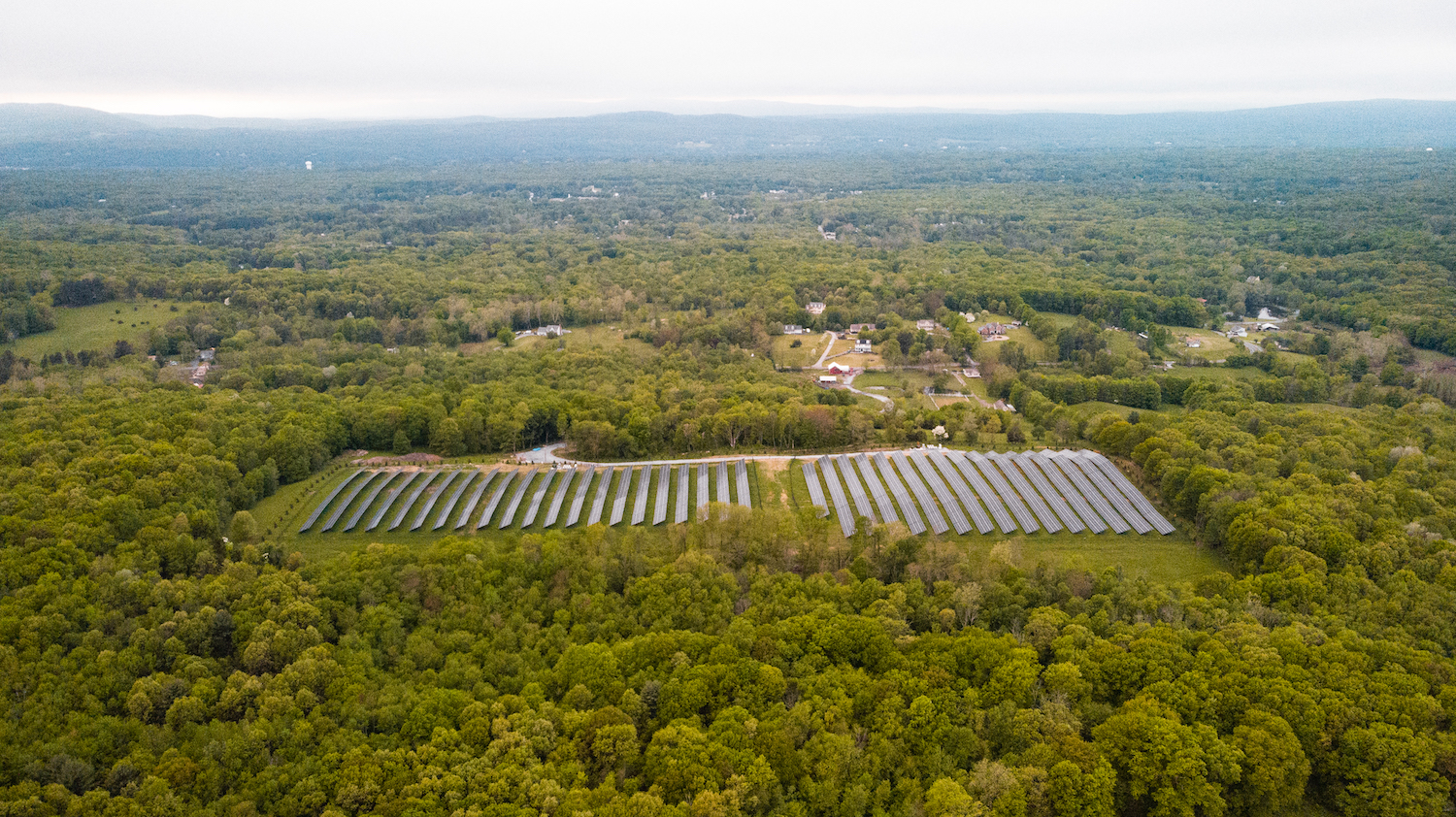
Lightstar Renewables' community solar project in Saugerties, New York, generates enough energy to power 770 homes and offset 5,192 tons of carbon dioxide per year.
Recurrent, record-setting temperatures make one thing clear: The climate crisis is upon us. With the phenomenon no longer in the future tense, the dialogue is starting to shift. Prevention can no longer be our sole focus. We must also begin to adapt. Agrivoltaics presents a promising way to do so, while cutting greenhouse gas emissions through renewable energy production.
Agrivoltaics is dual-use solar
So, what are agrivoltaics? “It's a single parcel of land being used for both solar and either agricultural or horticultural productivity,” said Kelly Buchanan, policy and strategy manager at Lightstar Renewables, a community solar developer that is expanding into agrivoltaics.
Solar panels can be installed above crops on a farm, for example. They can also be mounted over greenhouses or above pastures to provide shade for livestock. Meanwhile, the energy produced can be made available to the surrounding community through local utility subscriptions. Or, if farmers and landowners install their own panels, they can use the electricity generated to mitigate their energy costs.

Designed to optimize sunlight and shield crops
Although it may look like the solar panels block out the sun and limit photosynthesis, this is not the case. “The solar panels tilt," Buchanan explained. Each panel sits on a single axis tracker that follows the sun throughout the day, optimizing solar power generation and providing the plants underneath with plenty of light. The solar panels are also bifacial, meaning they can generate energy from sunlight on both sides.
Not only do agrivoltaics double up on land use by allowing solar energy production on the same soil that grows food, but the practice also offers an important adaptation option for our warming planet. Solar panels that are mounted above crops have a protective effect, keeping plants cooler and leading to less evaporation and, therefore, less demand for irrigation, Buchanan explained. Water that does evaporate helps cool down the solar panels to optimize energy production.
“[With] the drought out West and the increasing pressure on what we use our water for, it’s huge," Buchanan said. “There's another benefit here of the solar panels creating a bit of a microclimate which can shelter from heavy rain events [and] protect plants from hail."
Increased yields
With all of these benefits, it’s no surprise that many crops actually perform better under the cover of solar panels than they do when they are completely exposed to the elements.
“In Arizona, for example, we saw that tomatoes fruited more, and peppers produced up to three times more underneath these projects," Buchanan said. "We also saw, out of a study coming from Massachusetts, that peppers, broccoli, kale and Swiss chard all saw the same or greater yield, despite a record dry and hot summer in the year the study was conducted. There's a huge opportunity here."
Benefits for farmers and landowners
In addition to the potential for higher yields and lower water needs, farmers and landowners can benefit financially from agrivoltaic contracts. “The landowner gets a lease payment for the use of the land monthly,” Buchanan said. Farmers also receive stipends to reimburse them for their time spent cutting weeds and vegetation away from the panels.
“From the start of the project to the end, our priority is to work with farmers and farm managers to understand how agrivoltaics can be implemented and the system that works best for them,” she said. “And we're really taking into consideration soil health, especially in the construction period, and making sure we retain that soil.”

Drawbacks and challenges
While the research is encouraging, not all crops have been tested for compatibility with agrivoltaics. For all we know, some may fare worse under the system, though this does not appear to be the case so far.
Still, since the concept of agrivoltaics is in its infancy, it will likely be a while before these systems are implemented at scale. “It takes a lot of time to bring this new idea to communities, to answer their questions, to make sure they're getting the information they need, and then to allow the stakeholder process to unfold and allow communities to coalesce from a regulatory standpoint,” Buchanan said. Communities may need to vote on new zoning ordinances, for example, to allow agrivoltaics projects to go forward.
It’s too early to say whether agrivoltaics can solve the competition for land between crop farms and solar farms. But the data suggests there are big benefits to marrying the two together — especially as the climate crisis worsens and the need to adapt, while also lowering dependence on fossil fuels, becomes an absolute necessity.
Images courtesy of Lightstar Renewables

Riya Anne Polcastro is an author, photographer and adventurer based out of Baja California Sur, México. She enjoys writing just about anything, from gritty fiction to business and environmental issues. She is especially interested in how sustainability can be harnessed to encourage economic and environmental equity between the Global South and North. One day she hopes to travel the world with nothing but a backpack and her trusty laptop.














